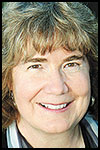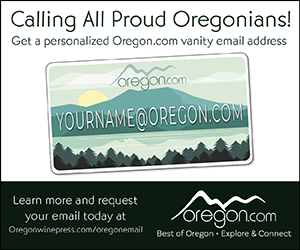Joan Paddock: Starting with a rhythm
People may know me as a professor of music at Linfield College, as conductor of the college band or as a trumpet player at churches and concerts in the community. A newer, somewhat related, interest of mine is rhythm and wellness through the use of a drum circle. I’ve recently enjoyed the pleasure of bringing the drum circle experience to the college and community.
The drum circle in its modern form is finding favor in many settings, including, but not limited to, corporate team building, mental health therapy, at-risk populations, wellness groups and high-stress work relief. “Drums” in this context mean a variety of rhythm instruments, including several types and forms of hand drums, shakers, scrapers, bells, whistles and tuned percussion such as the family of tongue drums. They can be factory built, homemade or “found objects.”
My introduction to the drum circle started through my academic activities at Linfield College — specifically, my involvement with the Inquiry Seminar (INQS) curriculum and my course, Drumwise, an outgrowth of my INQS, “What to Listen for in the World.”
The INQS is a required, intensive freshman writing course offered by all departments. Professors in every discipline periodically instruct one and the professor is responsible for designing its content, which must pass Linfield review to be approved. No matter which INQS is chosen, the student is in for a demanding, challenging experience.
I began to introduce a brief drum circle into my INQS as a way to break the ice, relieve stress, teach elements of music and improve focus and participation. The response was positive and gratifying for all. Students reported they felt better, they gained confidence and voice in their writing and said that drum circle was an important part of their day.
I expanded on these experiences and designed Drumwise with the entire Linfield Community in mind. The class was an interdisciplinary unifying force and a creative outlet for students to connect with music in new ways. Students researched and presented papers and projects on drumming’s correlation with topics like wellness, autism and meditation. Finally, a major project required students to present on a specific culture’s history of drums, some of which are truly ancient. A variety of guest lecturers were part of the curriculum. Meanwhile, every class included a drum circle, and each student learned to be a facilitator. This task was a new and uncomfortable prospect for some, as being in front of a group and leading it is not easy for all.
My positive experiences with students led to discussions with friends Jeanne and David Beck. Jeanne is president of the Yamhill County chapter of the National Alliance on Mental Illness. Quite aware of the therapeutic benefits of the drum circle within the mental health community, Jeanne tapped me to partner on a project to lead drum circles at NAMI’s get-togethers. Together, we were able to obtain a grant from the Yamhill County Cultural Coalition to purchase a kit of percussion instruments With the generosity of Brian and Susan Case at Peripole, an instrument store in Salem, we maximized the grant money with at-cost purchases and additional donations from Peripole.
NAMI’s goal is to support Americans suffering from mental illness, their family members, friends and concerned citizens. The monthly chapter meetings are open to the public, and often feature guests and advocates who speak on advancements for mental health treatment, or report on news in the mental health services system.
The Becks invited me to facilitate a drum circle for a NAMI meeting. I use the word facilitate because people engage in the drum circle differently from other musical groups that are traditionally conducted. This is muc different from my work as a college band director and professional musician. In the drum circle, participants are guided; one might say I facilitate their engagement into the experience. This all sounds very New Age, but it best describes the process or event.
The percussive instruments are brought into the room and the group members are encouraged to interact with them at their preferred pace. They can pick them up, touch and feel them, play with them, and, ultimately, explore the sounds that can be made with them. Everyone I encounter, from children through the elderly, are drawn to drums and their sound possibilities. It never fails.
At this point, I begin to play a simple rhythm, supply a steady beat and with a bit of further guidance and encouragement, the circle is underway. Things become complex or remain simple as the groups’ dynamic dictates. This is a social event, not a venue for virtuosic display. All participate as they wish and are able; everyone is encouraged to try a variety of instruments and really have at it.
Music making has long been a powerful activity in the human experience. Believed to be the earliest form of musical expression, drumming continues to have a primary role in community engagement. Through my teaching activities at Linfield College, and as a facilitator of drum circle events in the community, I know of drumming’s profound ability to engage and connect people in a way few other activities can.
Participating in drum circles is foundational. One contributes and participates to whichever degree is possible, from passive listening to active engagement. There are no requirements. There is no preparation or practice. Formal training or so-called musical ability is definitely not required.
People of limited mobility or awareness may participate, and all levels of sophistication contribute equally. Because of this, people are drawn to this communal activity. Group drumming enhances and warms relationships, sparks creativity, prompts cooperation and engages people in a positive, non-verbal way. It fosters communication and breaks down barriers within groups. It reduces stress, and, most importantly, it celebrates the human spirit — regardless of the setting.
So if you learn of a drum circle in your area, I highly recommend you join in.














Comments